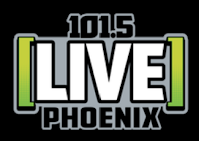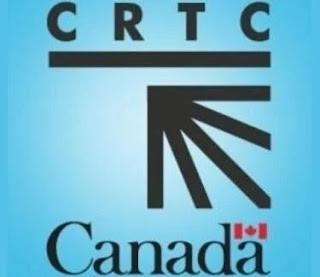➦In 1858...First news dispatch by telegraph. Printed next day in the NYTimes.
➦In 1873...Lee de Forest born in Council Bluffs, Iowa (Died at age 87 – June 30, 1961), He was the self-described "Father of Radio", and a pioneer in the development of sound-on-film recording used for motion pictures. He had over 180 patents, but also a tumultuous career—he boasted that he made, then lost, four fortunes. He was also involved in several major patent lawsuits, spent a substantial part of his income on legal bills, and was even tried (and acquitted) for mail fraud. His most famous invention, in 1906, was the three-element "Audion" (triode) vacuum tube, the first practical amplification device. Although De Forest had only a limited understanding of how it worked, it was the foundation of the field of electronics, making possible radio broadcasting, long distance telephone lines, and talking motion pictures, among countless other applications.
 |
| Lee DeForest circa 1916-1922 |
The electron tube, specifically the triode, a three element vacuum tube, made possible radio broadcasting as we knew it in the first half of the 20th century. However, he was forced into selling the rights to his patent to American Telephone and Telegraph for $500,000; considered by most to be foolish of AT&T.
In the summer of 1915, DeForest received an experimental license for station 2XG, located at its Highbridge laboratory in New York City. In late 1916, de Forest renewed the entertainment broadcasts he had suspended in 1910, now using the superior capabilities of vacuum-tube equipment. 2XG's debut program aired on October 26, 1916, as part of an arrangement with the Columbia Gramophone record company to promote its recordings, which included "announcing the title and 'Columbia Gramophone Company' with each playing". Beginning November 1, the "Highbridge Station" offered a nightly schedule featuring the Columbia recordings.
These broadcasts were also used to advertise "the products of the DeForest Radio Co., mostly the radio parts, with all the zeal of our catalogue and price list", until comments by Western Electric engineers caused de Forest enough embarrassment to make him decide to eliminate the direct advertising. The station also made the first audio broadcast of election reports — in earlier elections, stations which broadcast results had used Morse code — providing news of the November 1916 Wilson-Hughes presidential election. The New York American installed a private wire and bulletins were sent out every hour. About 2000 listeners heard The Star-Spangled Banner and other anthems, songs, and hymns.
 |
| 1916 |
With the entry of the United States into World War One on April 6, 1917, all civilian radio stations were ordered to shut down, so 2XG was silenced for the duration of the war.
Effective October 1, 1919, the ban on civilian radio stations was ended. On October 13, 1921 the De Forest company was issued a broadcasting station authorization in the form of a Limited Commercial license with the randomly assigned call letters WJX, operating on 360 meters (833 kilohertz). This was the first broadcasting license issued for a station in New York City proper, however, despite its heritage there was minimal, if any, programming ever broadcast by WJX. Effective December 1, 1921, 360 meters was designated as the common "entertainment" broadcasting wavelength, and stations within a region had to devise time-sharing agreements to allocate the hours during which they could operate. But a mid-1922 agreement covering the New York City area didn't even list WJX as being active. WJX continued to be included in the official government lists of stations holding licenses through early 1924, but contemporary newspapers and magazines providing station programming information do not contain any evidence that the station was actually on the air. In June 1924, WJX (along with 2XG) was officially deleted by the government.
 |
| 1955 |
De Forest later became a vocal critic of many of the developments in the entertainment side of the radio industry. In 1940 he sent an open letter to the National Association of Broadcasters in which he demanded: "What have you done with my child, the radio broadcast? You have debased this child, dressed him in rags of ragtime, tatters of jive and boogie-woogie." That same year, de Forest and early TV engineer Ulises Armand Sanabria presented the concept of a primitive unmanned combat air vehicle using a television camera and a jam-resistant radio control in a Popular Mechanics issue. In 1950 his autobiography, Father of Radio, was published, although it sold poorly.
De Forest was the guest celebrity on the May 22, 1957, episode of the television show This Is Your Life, where he was introduced as "the father of radio and the grandfather of television". He suffered a severe heart attack in 1958, after which he remained mostly bedridden. He died in Hollywood on June 30, 1961, aged 87. De Forest died relatively poor, with just $1,250 in his bank account.[
 |
| Phil Baker |
➦In 1896...Phil Baker born in Philadelphia (Died at age 67 – November 30, 1963). He was a comedian and radio host.
He came out of vaudeville (where he teamed with Ben Bernie) to star in 1933 as a comedian and accordion player in his own NBC radio series The Armour Jester. The show moved to CBS and became first The Gulf Headliner and later Honolulu Bound. In the 1940s for six years he was the host of the CBS radio quiz show Take It or Leave It, which later became The $64 Question.
➦In 1911...Hal Gibney born (Died at age 63 –June 5, 1973). He was NBC's West Coast announcer for more than 20 years. He was best known as the announcer for The Six Shooter and The Mickey Mouse Club. He was also known as the announcer for the radio and the original television version of Dragnet.

















































